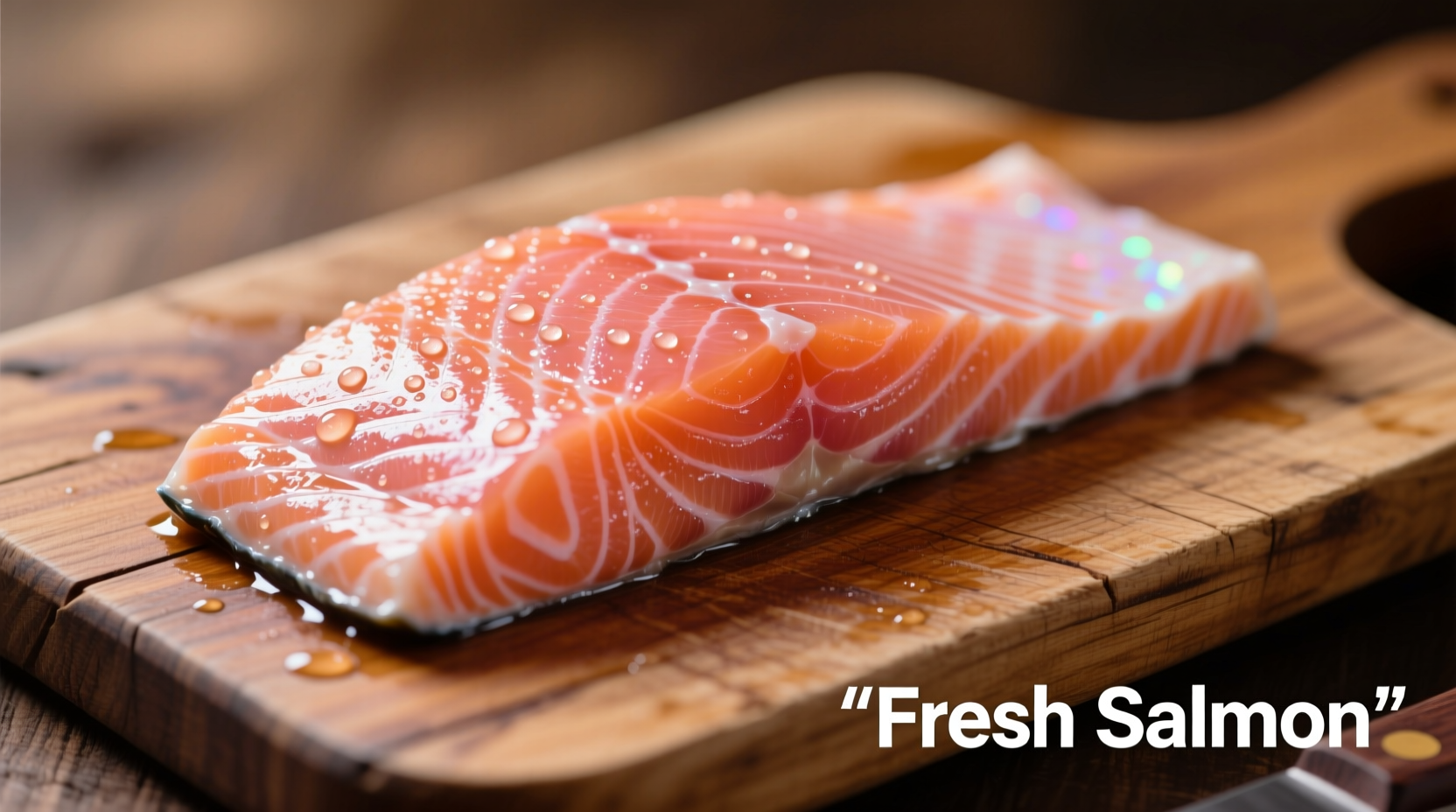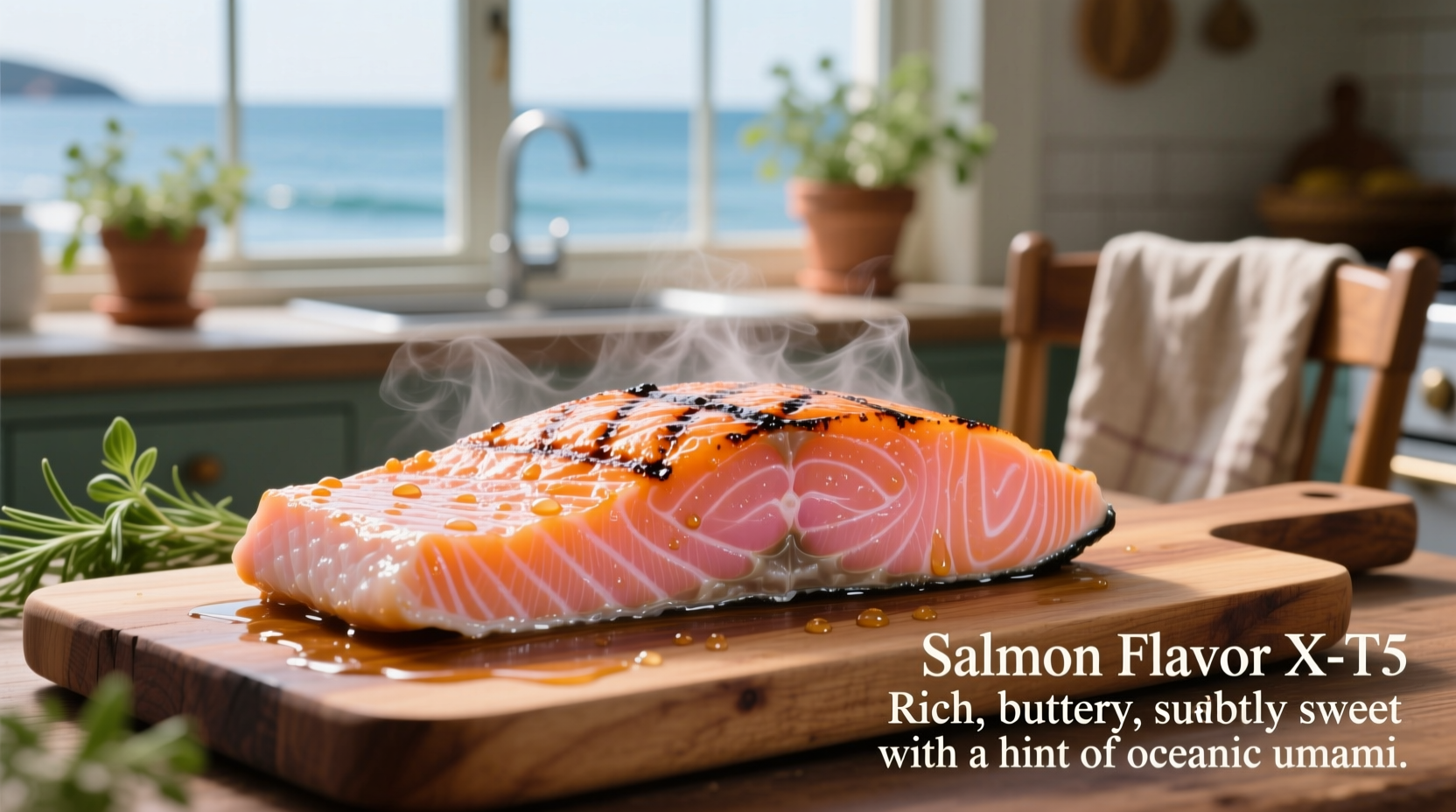When you take your first bite of properly prepared salmon, you'll experience a harmonious balance of flavors that explains why this fish has become a culinary favorite worldwide. Unlike stronger-tasting fish like mackerel, salmon delivers a refined oceanic essence without overwhelming "fishiness" when fresh and correctly handled. The high omega-3 fatty acid content creates that distinctive buttery mouthfeel that distinguishes salmon from leaner white fish like cod or tilapia.
Decoding Salmon's Flavor Profile
Understanding what does salmon taste like requires examining its unique composition. The rich fat marbling—particularly concentrated in the belly portion—contributes significantly to salmon's luxurious texture and flavor-carrying capacity. This fat content, typically ranging from 5-12% depending on species and origin, allows salmon to absorb seasonings beautifully while maintaining its signature richness.
Professional chefs describe salmon's taste profile as having three distinct elements: a clean oceanic freshness, a mild sweetness reminiscent of shellfish, and a savory umami depth that makes it incredibly versatile in cooking. When perfectly fresh, salmon shouldn't taste "fishy" at all—that perception usually indicates improper handling or storage.

Wild vs. Farmed: A Taste Comparison
One of the most significant factors affecting what does salmon taste like is whether it's wild-caught or farm-raised. This distinction creates noticeable differences in flavor, texture, and nutritional profile:
| Characteristic | Wild Salmon | Farmed Salmon |
|---|---|---|
| Flavor Intensity | Bolder, more complex | Milder, more consistent |
| Fat Content | 3-8% (varies by season) | 10-14% (more consistent) |
| Color | Deep orange-red | Bright orange (often enhanced) |
| Texture | Firmer, more fibrous | Softer, more buttery |
| Seasonal Variation | Significant (spring vs fall) | Minimal |
According to NOAA Fisheries data, wild salmon's diet of krill, shrimp, and small fish creates higher levels of astaxanthin—a powerful antioxidant that gives salmon its distinctive color and contributes to its complex flavor profile. Farmed salmon receive supplemental astaxanthin in their feed to achieve the expected coloration, but the flavor development differs due to controlled feeding regimens.
How Cooking Transforms Salmon's Taste
The cooking method dramatically influences what does salmon taste like. Each technique extracts different flavor compounds and alters the fat structure:
- Raw (as sashimi): Delivers the purest expression of salmon's natural sweetness with a clean, refreshing quality. High-quality sushi-grade salmon showcases delicate buttery notes without any fishiness.
- Pan-seared: Creates a flavorful crust while preserving the tender interior. The Maillard reaction develops complex savory notes that complement salmon's natural richness.
- Grilled: Imparts smoky characteristics that pair beautifully with salmon's oil content. The fat drips onto heat sources, creating aromatic smoke that infuses the fish.
- Baked: Allows for even cooking that preserves moisture. Works well with herb crusts or citrus marinades that penetrate the flesh.
- Poached: Yields the most delicate flavor profile, ideal for showcasing premium salmon without competing flavors.
Culinary science explains that salmon's optimal eating temperature is 110-125°F (43-52°C)—beyond this range, the proteins tighten and squeeze out flavorful oils, diminishing that signature buttery texture. This precise temperature control separates exceptional salmon preparation from disappointing results.
Salmon Compared to Other Fish
Understanding what does salmon taste like becomes clearer when comparing it to other popular fish options:
- Milder fish (cod, tilapia): These white fish have subtle flavors that easily absorb seasonings but lack salmon's inherent richness. Salmon stands out with its pronounced buttery notes and higher fat content.
- Stronger fish (mackerel, bluefish): These deliver more intense, oily flavors that some find overpowering. Salmon offers a middle ground—rich without being overwhelming.
- Tuna: While both are oily fish, tuna has a meatier texture and more pronounced savory notes, whereas salmon provides a sweeter, more delicate experience.
American Heart Association research confirms salmon's fat composition includes higher levels of heart-healthy omega-3 fatty acids compared to many other fish, contributing to both its distinctive flavor and nutritional benefits. This scientific insight helps explain why salmon tastes different than other fish varieties.
When Salmon Tastes "Fishy": Understanding the Problem
Many people wonder why does salmon taste fishy sometimes. The truth is, properly handled salmon shouldn't have a strong fishy taste. Several factors can cause undesirable flavors:
- Improper storage: Salmon begins to degrade quickly when not kept at proper temperatures. The USDA recommends consuming fresh salmon within 1-2 days of purchase.
- Oxidation: When fats break down, they create unpleasant compounds. Vacuum-sealed or properly wrapped salmon maintains quality longer.
- Cross-contamination: Storing salmon near strong-smelling foods can transfer unwanted flavors.
- Overcooking: Excessive heat causes proteins to tighten and release bitter compounds from the fat.
Culinary studies show that consumer surveys consistently indicate salmon's flavor is most appreciated when prepared simply with minimal seasoning—allowing its natural qualities to shine. This insight reveals why many professional chefs recommend restrained preparation for premium salmon.
Practical Tips for First-Time Salmon Eaters
If you're wondering what does fresh salmon taste like and considering trying it for the first time, these tips will ensure a positive experience:
- Start with farmed Atlantic salmon, which has a milder flavor profile than wild varieties
- Look for bright, firm flesh with no strong odors—fresh salmon should smell like the ocean, not fishy
- Try it prepared with simple lemon-dill seasoning to appreciate its natural flavor
- Consider smoked salmon as an introduction—it has a more concentrated, familiar flavor profile
- Avoid overcooking; properly cooked salmon should remain slightly translucent in the center
Understanding salmon's taste journey—from ocean to plate—helps appreciate why this fish has become a global culinary staple. Whether you prefer the robust complexity of wild-caught sockeye or the consistent mildness of responsibly farmed Atlantic salmon, there's a preparation method to showcase its unique flavor profile perfectly.
Frequently Asked Questions
Does salmon taste fishy?
Fresh, properly handled salmon should not taste fishy. Any strong fishy flavor typically indicates improper storage or that the salmon is no longer fresh. High-quality salmon has a clean, oceanic freshness with buttery and slightly sweet notes rather than an overpowering fishiness.
Why does wild salmon taste different than farmed salmon?
Wild salmon has a more varied natural diet and more active lifestyle, resulting in leaner flesh with a richer, more complex flavor profile. Farmed salmon eats a controlled diet and has less exercise, creating higher fat content with a milder, more consistent taste. Wild salmon typically has deeper color and firmer texture compared to farmed varieties.
How can I tell if salmon is fresh by taste?
Fresh salmon should have a clean, delicate ocean flavor without any ammonia-like or overly fishy notes. It should taste mildly sweet with buttery richness, not bitter or metallic. The texture should be tender and moist, not dry or chalky. Any off-flavors typically indicate the salmon is past its prime.
Does cooking method affect salmon's taste significantly?
Yes, cooking method dramatically impacts salmon's flavor profile. Raw preparation showcases its natural sweetness, while grilling adds smoky notes. Pan-searing creates complex Maillard reaction flavors, and baking preserves delicate nuances. Overcooking causes bitterness as fats oxidize, while proper temperature control (110-125°F) maintains the buttery texture and sweet notes that define quality salmon.











 浙公网安备
33010002000092号
浙公网安备
33010002000092号 浙B2-20120091-4
浙B2-20120091-4